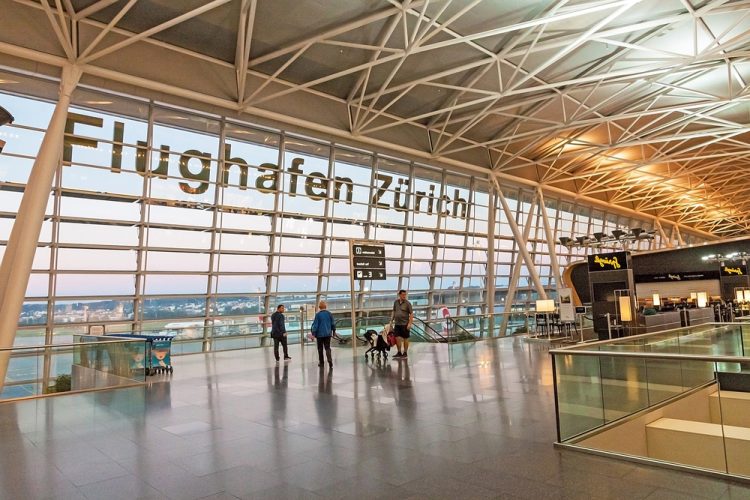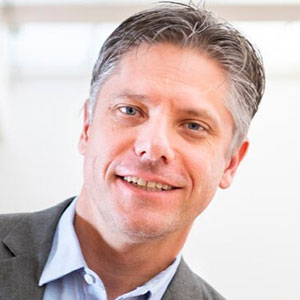Underground subglacial channel to enable emission-free heating and cooling for Flughafen Zürich AG
Posted: 24 November 2023 | International Airport Review | No comments yet
Heating and cooling the airport infrastructure accounts for by far the largest proportion of Flughafen Zürich AG’s own CO2 emissions.


Zurich Airport.
Net-zero by 2040: this is the goal Flughafen Zürich AG has set itself. The company is now exploring innovative ways to replace fossil fuels. One promising project could be the use of a subglacial groove 300 meters below Zurich Airport’s. This channel, filled with water-bearing gravel, would serve as a heat and cold storage to heat and cool a significant proportion of the airport buildings without emitting CO2 emissions.
Heating and cooling the airport infrastructure accounts for by far the largest proportion of Flughafen Zürich AG’s own CO2 emissions.
“By moving away from fossil fuels such as oil and gas, we are making significant progress towards our goal of achieving zero greenhouse gas emissions by 2040. Geothermal energy plays a key role in this. We are already using innovative technologies such as energy piles and geothermal probes for environmentally friendly climate control when constructing new buildings,” said Lydia Naef, Chief Real Estate Officer, Flughafen Zürich AG.
Join our free webinar: Revolutionising India’s travel experience through the Digi Yatra biometric programme.
Air travel is booming, and airports worldwide need to move passengers faster and more efficiently. Join the Digi Yatra Foundation and IDEMIA to discover how this groundbreaking initiative has already enabled over 60 million seamless domestic journeys using biometric identity management.
Date: 16 Dec | Time: 09:00 GMT
rEGISTER NOW TO SECURE YOUR SPOT
Can’t attend live? No worries – register to receive the recording post-event.
By using an underground groove from the last ice age as heat and cold storage, an even more efficient and innovative technology could be used in the future. A project on this scale is unique in Switzerland to date.
CREDIT: ZURICH AIRPORT
First promising results
The experts at Flughafen Zürich AG worked closely with IG Rinne, a consortium consisting of engineering consultants at Geo Explorers, Sieber Cassina & Partner AG and E-Axiom GmbH, to develop a multi-stage process to analyse the potential of the channel as a storage. As a first step, seismic investigations were carried out. This allowed the channel depth, shape and rough layer structure to be mapped. Additional exploratory drilling at three locations confirmed the initial findings and provided promising additional information about the groove: it is up to one kilometer wide and around 30 kilometers long. The key factor, however, is its composition. The channel carries gravel and water and therefore fulfills the requirements of potential heat and cold storage. Excess heat from the summer can be stored in water-bearing gravel and taken out again for heating in the winter. In turn, the buildings can be cooled in the summer.
Pilot project with national reach
The next step is to construct a test well. Among other things, it will show what quantities of water can be pumped and what the flow rate and chemical composition of the water are. This in turn will determine where the final wells for pumping and returning the groundwater could be located and how many of them would be needed to use the channel an efficient storage. If too many wells are required, Flughafen Zürich AG would not be able to implement the project to full effect. However, the prospects are positive. The results of the explorations to date are promising. Regardless of the extent to which the channel can ultimately be used as a heat and cold storage for the airport, the current investigations are valuable and provide important new insights into the structure and groundwater of such deep channels and their development.
“The project is being funded and supported by the Swiss Federal Office of Energy as a pilot project. We are making all the findings available to the scientific community and can thus contribute to research into emission-free cooling and heating systems,” said Emanuel Fleuti, Head of Sustainability and Environment, Flughafen Zürich AG.
If successful, Flughafen Zürich AG will be able to use the channel as a heat and cold storage starting in 2026. Flughafen Zürich AG estimates the investment costs for researching the channel and building the wells at between CHF four and eight million – depending on the number and locations of the wells. In addition, there would be costs for pipelines and other technical measures. The project is being funded by the Swiss Federal Office of Energy (BFE) as a pilot project for geo-energy with a maximum of CHF one million.
Stay Connected with International Airport Review — Subscribe for Free!
Get exclusive access to the latest airport and aviation industry insights from International Airport Review — tailored to your interests.
✅ Expert-Led Webinars – Gain insights from global aviation leaders
✅ Weekly News & Reports – Airport innovation, thought leadership, and industry trends
✅ Exclusive Industry Insights – Discover cutting-edge technologies shaping the future of air travel
✅ International Airport Summit – Join our flagship event to network with industry leaders and explore the latest advancements
Choose the updates that matter most to you.
Sign up now to stay informed, inspired, and connected — all for free!
Thank you for being part of our aviation community. Let’s keep shaping the future of airports together!
Related topics
Airport development, Economy, New technologies, Sustainability, Sustainable development


















